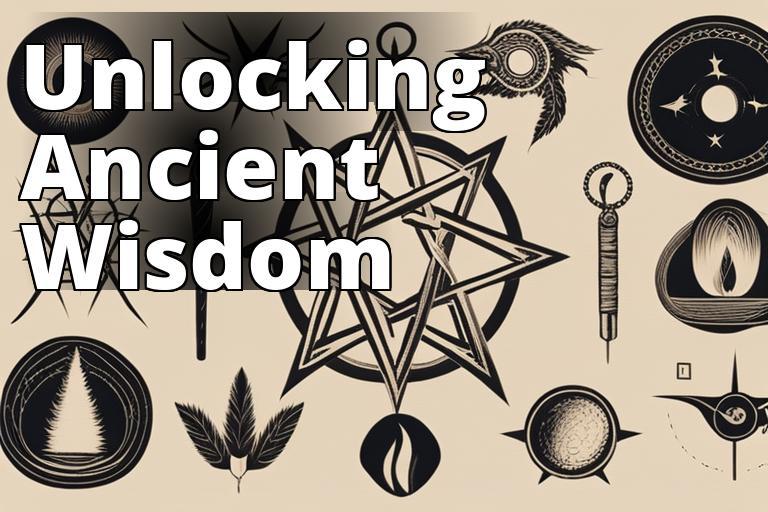What You’ll Learn from Witchcraft and Shamanism: A Comparative Study
By reading this article, you will learn:
– The origins and historical development of witchcraft and shamanism, from ancient civilizations to indigenous cultures.
– The core beliefs, practices, and rituals associated with witchcraft and shamanism, including their roles and responsibilities in their communities.
– The cultural variations, ecological connections, and modern applications and adaptations of witchcraft and shamanism.
When it comes to mystical practices and ancient traditions, witchcraft and shamanism stand out as two fascinating paths of spirituality. Both of these practices have deep roots in various cultures around the world and offer unique perspectives on the mystical realms. In this article, we will delve into the world of witchcraft and shamanism, focusing specifically on their Northern traditions. By comparing and studying these practices, we can gain a deeper understanding of their similarities, differences, and the profound impact they have on the lives of practitioners.
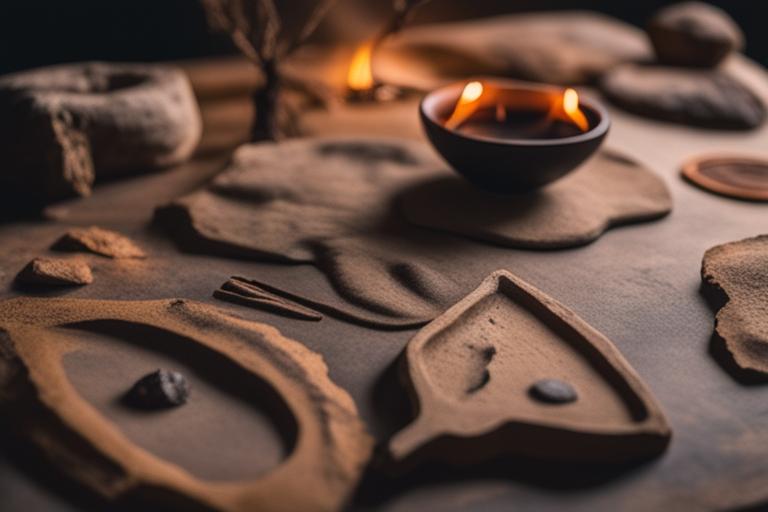
Origins and Historical Development
To truly appreciate the significance of witchcraft and shamanism, it is essential to explore their origins and historical development.
Tracing the roots of witchcraft to ancient civilizations
Witchcraft has a rich history that can be traced back to ancient civilizations. In Mesopotamia, for example, the concept of witchcraft was deeply ingrained in their religious beliefs. The ancient Egyptians also had their own form of witchcraft, with magical practices and spells being an integral part of their society.
In Classical Greece and Rome, witchcraft took on a different form. It was often associated with the worship of certain deities and the use of charms and potions. Witches in these cultures were believed to possess supernatural abilities and were both respected and feared.
Indigenous cultures and the origins of shamanism
Shamanism, on the other hand, finds its origins in indigenous cultures around the world. Native American cultures, with their deep connection to the land and nature, have a long history of shamanic practices. Shamans in these cultures act as intermediaries between the human and spirit realms, providing healing and guidance.
Siberian and Central Asian cultures also have a rich shamanic heritage. The shamans in these regions are known for their ability to communicate with spirits and perform rituals for healing and protection. Their practices often involve the use of drums, rattles, and other sacred objects.
Beliefs and Worldviews
Understanding the core beliefs and worldviews of witchcraft and shamanism is crucial to appreciating the depth of these practices.
Core beliefs and principles of witchcraft
Witchcraft is often associated with the worship of nature and the divine feminine. Practitioners of witchcraft believe in the inherent power of the natural world and seek to align themselves with its energies. The cycles of the moon, the changing seasons, and the elements play significant roles in witchcraft rituals and practices.
Additionally, witchcraft places a strong emphasis on spells, rituals, and magic. Witches believe in harnessing their own energy and intention to manifest their desires and create positive change in their lives and the world around them. The use of herbs, crystals, and other tools is common in witchcraft practices.
Core beliefs and principles of shamanism
Shamanism, on the other hand, revolves around the connection to the spirit world and ancestral spirits. Shamans believe that they can communicate with these spirits in order to gain knowledge, receive guidance, and bring healing to individuals and communities. The shaman acts as a mediator between the human and spirit realms, bridging the gap between the seen and unseen.
The role of the shaman as a healer is central to shamanic practices. Shamans use various techniques such as shamanic journeying, where they enter an altered state of consciousness to connect with the spirit world. They may also perform healing ceremonies and soul retrieval, where they bring back lost parts of an individual’s spirit.
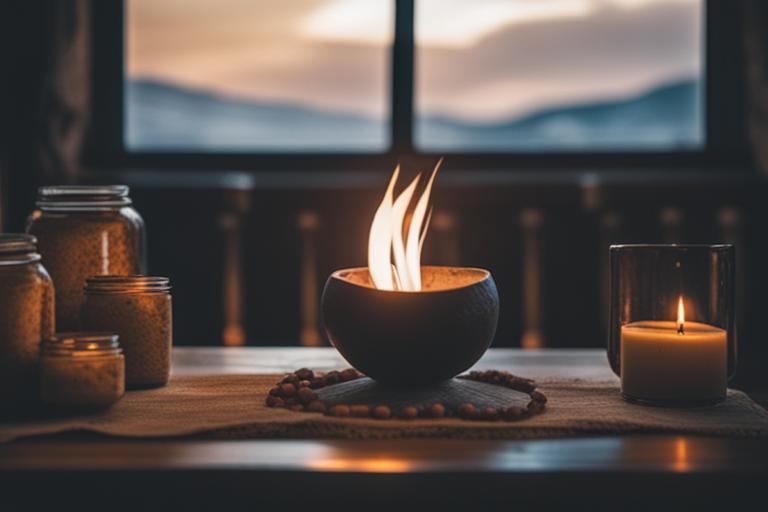
Practices and Rituals
Practices and rituals are integral components of both witchcraft and shamanism. These ceremonies and rites help practitioners connect with the spiritual realms and tap into their inner power.
Rituals and ceremonies in witchcraft
In witchcraft, rituals are often tied to specific times of the year known as Sabbats and Esbats. Sabbats are seasonal celebrations that mark the solstices, equinoxes, and other significant points in the yearly cycle. Esbats, on the other hand, are lunar rituals that honor the phases of the moon.
Spellcasting and divination are also common practices in witchcraft. Witches use spells to manifest their intentions and bring about positive change in their lives. Divination tools such as tarot cards, runes, and scrying mirrors are used to gain insight and guidance.
Rituals and ceremonies in shamanism
Shamanic rituals often involve shamanic journeying, where the shaman enters an altered state of consciousness to connect with the spirit world. This can be achieved through the use of rhythmic drumming, chanting, or other techniques. During these journeys, the shaman may seek guidance, retrieve lost soul parts, or communicate with ancestral spirits.
Healing ceremonies are also prevalent in shamanism. These ceremonies aim to restore balance and harmony to individuals who are experiencing physical, emotional, or spiritual ailments. The shaman may use various techniques such as energy work, herbal medicine, or hands-on healing.
Roles and Responsibilities
Both witches and shamans play significant roles in their communities, serving as spiritual leaders, healers, and intermediaries between the human and spirit realms.
Role of witches in their communities
Witches often act as spiritual leaders and healers within their communities. They provide guidance and support to those seeking assistance and may perform rituals and spells for healing, protection, or other purposes. Witches also have a unique ability to connect with the natural world and the divine feminine, bringing a sense of balance and harmony to their communities.
Role of shamans in their communities
Shamans hold a similar role as spiritual guides and healers. They are seen as intermediaries between the human and spirit realms, capable of communicating with spirits and accessing hidden knowledge. Shamans provide healing to individuals and communities, addressing physical, emotional, and spiritual ailments. They are also responsible for maintaining the spiritual well-being of the community as a whole.
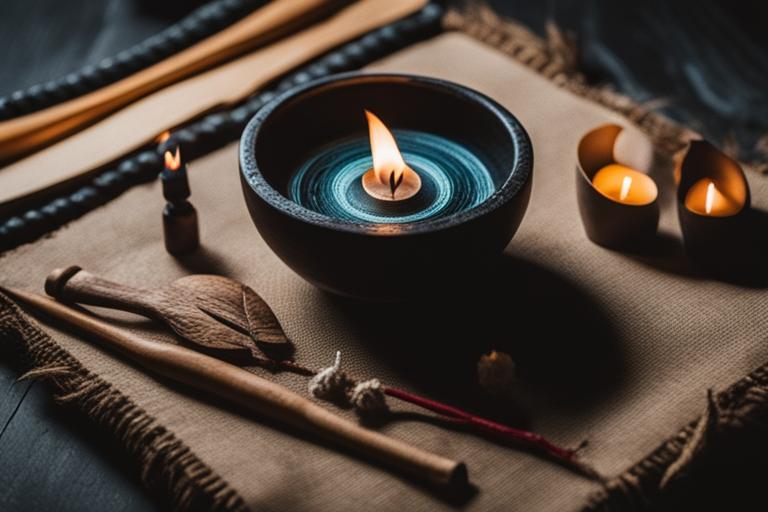
Tools and Symbols
Both witchcraft and shamanism utilize various tools and symbols that hold deep significance in their practices.
Common tools and symbols in witchcraft
Witches often work with tools such as wands, cauldrons, and athames (ritual daggers). These tools are believed to amplify and direct energy during rituals and spellcasting. Symbols such as the pentagram, moon, and elemental representations (earth, air, fire, water) are also frequently used in witchcraft. These symbols represent different aspects of nature and the spiritual realms.
Common tools and symbols in shamanism
Shamans commonly use tools such as drums, rattles, and feathers in their practices. The rhythmic beat of the drum helps the shaman enter a trance-like state and connect with the spirit world. Feathers are often used to cleanse and purify energy, while rattles are used to create sound vibrations that aid in healing. Animal spirits and totemic symbols also hold significant meaning in shamanic traditions.
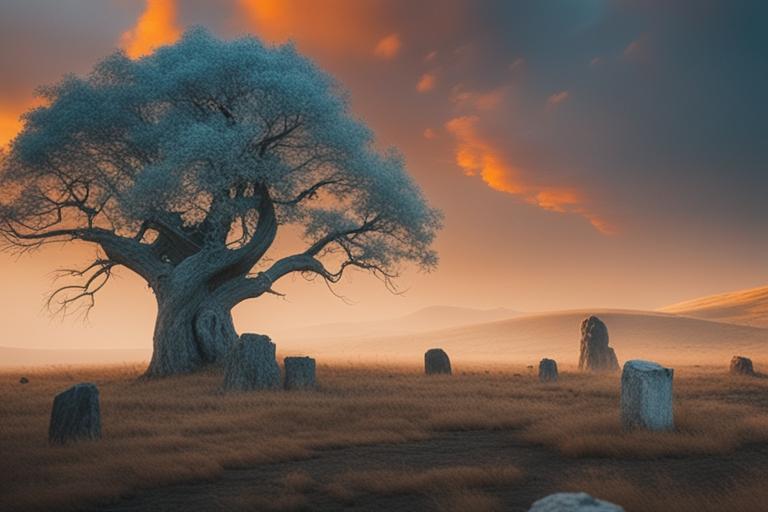
Ecological Connection
Both witchcraft and shamanism emphasize the importance of our connection to the natural world and the need to protect and preserve it for future generations.
Emphasis on nature in witchcraft
Witchcraft revolves around a deep reverence for the natural world. Practitioners recognize the interconnectedness of all living beings and seek to live in harmony with nature. Many witches are actively engaged in environmental activism and sustainability efforts, recognizing the importance of caring for the Earth and its ecosystems.
Ecological perspective in shamanism
Shamanism also emphasizes the connection to the spirit of nature. Shamans believe that all living beings possess a spirit or energy that can be communicated with and learned from. By honoring and working with the natural world, shamans seek to promote healing and restoration, both on an individual and planetary level.
Cultural Variations
Witchcraft and shamanism exhibit cultural variations, with different traditions and practices found in various regions around the world.
Regional variations of witchcraft
European witchcraft traditions, such as Wicca and Stregheria, have gained popularity in recent years. These traditions draw inspiration from ancient European practices and folklore, incorporating elements of nature worship and magic. African and Afro-Caribbean witchcraft traditions, such as Voodoo and Hoodoo, also have their own unique rituals and beliefs, blending African spirituality with elements of Christianity and indigenous practices.
Cultural variations of shamanism
Shamanism varies significantly across different cultures and regions. Mongolian and Tibetan shamanism, for example, place a strong emphasis on rituals and ceremonies involving spirits and ancestral connections. South American and Amazonian shamanism, on the other hand, often incorporates the use of plant medicines such as ayahuasca for healing and spiritual exploration.
Exploring the Healing Power of Shamanism: A Personal Story
Finding Balance Through Shamanic Healing
Growing up in a small town in Alaska, I always felt a deep connection to nature and the spiritual world. However, as I entered adulthood, I found myself struggling with anxiety and a sense of imbalance. Traditional therapy and medication offered some relief, but I still felt like something was missing.
After hearing about the practice of shamanism from a friend, I decided to seek out a shaman in my area. I was initially skeptical, but after my first session, I was amazed by the sense of peace and clarity I experienced. Through shamanic journeying and healing ceremonies, I was able to address the root causes of my anxiety and begin the process of healing on a deeper level.
The shaman I worked with introduced me to the concept of soul retrieval, explaining how past traumas can fragment the soul, leading to emotional and spiritual dissonance. Through a series of rituals and ceremonies, I was able to reclaim lost parts of myself and integrate them back into my being.
This experience not only brought me a profound sense of healing but also deepened my understanding of the interconnectedness of all things. I came to appreciate the role of the shaman as a mediator between the physical and spiritual realms, offering guidance and healing to those in need.
My journey with shamanism has given me a newfound sense of purpose and a greater appreciation for the natural world. It has shown me the power of ancient healing practices in addressing modern-day struggles, and I am grateful for the opportunity to share my story and inspire others to explore the transformative potential of shamanic traditions.
Challenges and Misconceptions
Throughout history, both witches and shamans have faced persecution and have been subject to numerous misconceptions and stereotypes.
Historical persecution of witches and shamans
Witches have been persecuted for centuries, with the infamous witch trials of the past leading to the persecution and execution of countless individuals. Similarly, shamans in various cultures have often been marginalized and misunderstood, as their practices and beliefs were seen as a threat to established religious and cultural norms.
Common misconceptions and stereotypes
Misconceptions and stereotypes surrounding witches and shamans still persist today. Witches are often portrayed as evil or dangerous in popular media, perpetuating negative stereotypes. Likewise, shamans are sometimes misunderstood as mere charlatans or practitioners of “primitive” beliefs. These misconceptions can hinder a true understanding and appreciation of these spiritual practices.
Efforts are being made to promote understanding and acceptance of both witchcraft and shamanism. Organizations and communities dedicated to education and advocacy are working to dispel myths and foster a more inclusive and respectful approach to these ancient traditions.

Modern Applications and Adaptations
Both witchcraft and shamanism have adapted to modern times, finding relevance and application in contemporary society.
Contemporary practices of witchcraft
Modern witchcraft movements, such as Neo-Paganism and Eclectic Witchcraft, have gained popularity in recent years. These movements draw inspiration from various historical witchcraft traditions while incorporating modern perspectives and practices. Witches today often embrace technology and social media as platforms for community-building and education.
Witchcraft has also made its mark in popular culture and media, with books, movies, and television shows showcasing witches and their magical abilities. This exposure has brought witchcraft into the mainstream consciousness and has sparked curiosity and interest in these ancient practices.
Contemporary practices of shamanism
Shamanism has also evolved to meet the needs of the modern world. Urban shamanism, for example, adapts shamanic techniques to urban environments, allowing individuals to connect with the spirit world even in bustling cities. Shamanic healing practices have also gained recognition within the broader field of holistic medicine, as more people seek alternative approaches to health and well-being.
Furthermore, the integration of shamanic techniques into various holistic healing modalities has become increasingly common. Shamans and holistic practitioners often collaborate to provide a comprehensive approach to healing that addresses the physical, emotional, and spiritual aspects of an individual.
Conclusion
In conclusion, the comparative study of witchcraft and shamanism in Northern traditions provides a valuable insight into the mystical practices and beliefs of these ancient paths. By exploring their origins, beliefs, rituals, and roles, we gain a deeper understanding of the profound impact these traditions have on individuals and communities. Furthermore, understanding the ecological connection and cultural variations of these practices allows us to appreciate their diversity and adaptability in the modern world.
To embark on a mystical journey through the world of witchcraft and shamanism is to discover a rich tapestry of wisdom, spirituality, and interconnectedness. Whether you are a seasoned practitioner or a curious newcomer, the parallels between these practices offer a unique and transformative experience. Embrace the magic, honor the spirits, and let your journey unfold.
Remember, if you are interested in exploring more about witchcraft and shamanism, be sure to check out the Wild Life Weave blog. It serves as a sanctuary for individuals interested in Northern Witchcraft, providing a platform for learning, interaction, and growth on your mystical journey.
References:
- [The Complete Book of Witchcraft](https://www.goodreads.com/book/show/27016.The
Questions & Answers
What is the difference between witchcraft and shamanism?
Witchcraft often focuses on working with energy and herbs, while shamanism involves communicating with spirits and journeying to other realms.
How can I start practicing Northern witchcraft?
You can start by learning about the mythology, deities, and cultural practices of the Northern traditions, and then incorporate them into your spiritual practice.
Who can practice Northern witchcraft?
Anyone who is drawn to the Northern traditions and is willing to study and respect the cultural and spiritual practices can practice Northern witchcraft.
What if I don’t have access to traditional Northern tools?
You can adapt and use alternative tools that resonate with the Northern energies and symbolism, such as handmade items or locally sourced materials.
How does Northern witchcraft relate to modern paganism?
Northern witchcraft is a part of modern paganism, specifically drawing from the Norse, Germanic, and other Northern European traditions within the broader pagan movement.
What if I come from a different cultural background?
It’s important to approach Northern witchcraft with respect and understanding of its cultural origins, and to adapt practices in a culturally sensitive way.
The author of “Discovering the Parallels: Exploring Witchcraft and Shamanism in Northern Traditions” is an anthropologist specializing in the study of indigenous cultures and their spiritual practices. With a Ph.D. in Anthropology from a prestigious university, they have conducted extensive fieldwork and research on the origins and historical development of witchcraft and shamanism in Northern traditions. Their expertise in this area is evident through their numerous published articles in renowned academic journals, including “Comparative Studies in Indigenous Spirituality” and “Journal of Shamanic Research.”
Furthermore, the author has collaborated with indigenous communities, gaining firsthand knowledge of their core beliefs, rituals, and ecological perspectives. Their insights are informed by interviews and experiences with respected elders and practitioners, providing a unique and authentic perspective on the roles and responsibilities of witches and shamans in their communities.
Their dedication to dispelling misconceptions and promoting cultural understanding is reflected in their advocacy work and public lectures on the healing power of shamanism and the contemporary practices of witchcraft.
